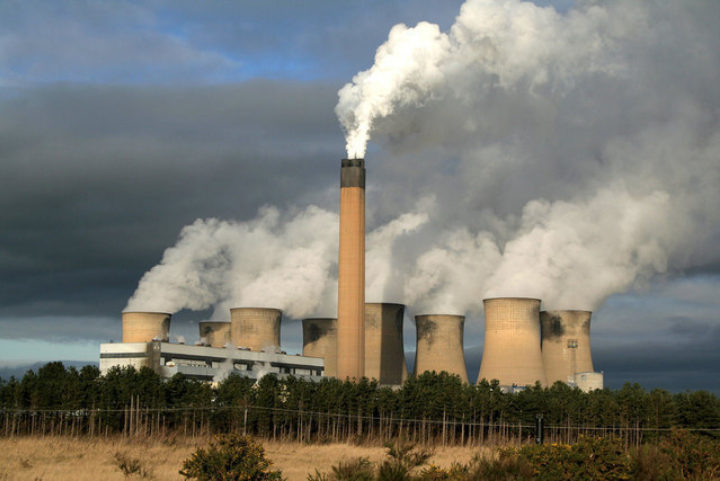Now for its next challenge: Cutting carbon
With the Capacity Market keeping the lights on for the next four winters, can it take on other roles?
By Jonny Marshall
Share
Last updated:
By Dr Jonathan Marshall, ECIU Energy Analyst
The dust has barely settled on the government's most recent electricity generation capacity auction - but already, another is in sight.
So far, so 'meh', you might say - but actually this week's auction should mark a turning point, wherein we stop using the capacity market only to keep the lights on, and start using it to facilitate the other aims of energy policy, including decarbonisation.

The capacity market (or 'mechanism', if you prefer) came into being because the growth in wind and solar power has been undermining the economic case for what used to be called 'conventional' generation. It's put an end to several 50-year-old coal-fired power stations already.
Yet without sufficient plants available that can be switched on and off at will - coal, gas, nuclear, hydro, biomass, etc - there would be a risk of shortages during periods of winter peak demand if wind farms are out of action.
In market terms: as the energy transition progresses, rewarding companies solely for electricity generated isn't enough. There needs to be also a new market in capacity - plants being financed to be available during winter.
Originally, the government planned for the capacity mechanism to kick in in the 2018-19 winter, with the vast majority of contracts tied up four years in advance - hence the first auction took place in 2014. However, after 'Blackout Britain' scare stories disturbed David Cameron's sleep late in 2015, then Energy and Climate Change Secretary Amber Rudd decided to bring it forward a year.
So we've already had auctions for 2018-19, 2019-20 and 2020-21. This week's auction will buy all the capacity needed for next winter, 2017-18.
Competitive bids
Auctions all follow the same format: a desired capacity of power stations is announced, power companies register to bid, and the auction works in reverse, decreasing in price until the required capacity is attained. All stations bidding below the clearing price are successful, and all receive the same amount of support, expressed in pounds per kilowatt per year.

Both existing stations and new projects can bid. In most auctions (but not this one), new power stations can gain a 15-year contract as opposed to the one- and three-year deals for existing ones.
It plans to buy 53.8 GW of de-rated capacity, just under the de-rated total for power stations currently plugged into the grid. Quite a bit more than this has pre-qualified, so there will be no problem procuring the amount of capacity needed.
As with all previous auctions, the maximum price that existing generators can bid at is £25 per kilowatt per year, a parameter introduced to stop companies with existing assets holding the government to ransom.
What to look for
Compared with previous auctions, this is likely to be a sedate affair. The excess of capacity available suggests that the government’s target will be filled entirely from power stations that are already up and running, and therefore costs should be low.
In fact, Aurora has forecast a clearing price in the ‘low teens’, which would be the lowest price to date in a UK capacity auction, despite the short lead time and volume sought. A clearing price of £13-15/kW/year would equate to a total cost of £700-800 million, or £8-10 per household, around 0.6% of the average dual fuel bill.
That's it sorted, then?
No, not really. Most forecasts see many coal-fired power stations receiving contracts, offering a lifeline to the oldest and most polluting power stations on our network.
While this seems counterintuitive with other policies designed to move away from coal (the carbon price floor, coal phase-out), for now, it is a necessary evil. Even if they bid successfully, emissions from the dirtiest power stations will be limited by running hours, which have plummeted over the past year.
Another criticism of the auction is the support offered to power stations that would already be running. Taking the UK’s fleet of nuclear power stations as an example, a £14/kW clearing price would see EDF trouser subsidies of more than £120 million. This would be on top of the £1 billion or so in revenue that they could lock in now by selling their November-February output on the futures market at current prices.
Next step: Reform
As Steve Holliday, CEO of National Grid for a decade, told BBC News this week:
The lights haven't gone out yet and thanks to the measures the government is putting in place this week they definitely won't go out in future.
But while the capacity market should logically put an end to scare stories surrounding security of supply, it is far from perfect – a fact that has not escaped our lawmakers. A recent report from the BEIS committee recommends reforms to facilitate cheap, clean and flexible technologies such as storage and demand side response (DSR), which should largely come at the expense of coal.
Already unprofitable without support, prospects for coal are rapidly waning. Having been partially killed off by impressive growth in UK wind over recent years, storage could be the final nail in the coffin. Around 500 MW of battery storage was successful in November’s capacity auction (for 2020-21), while storage is also becoming increasingly favoured in other lucrative contracts that were previously the reserve of coal, such as black start.
The government is also holding an auction uniquely reserved for turn-down DSR (as opposed to those pesky diesel generators) in the Spring, which will further eat into the prospects for back-up coal generation.
Therefore, with the capacity market set to ensure that the lights will indeed stay on next winter – and every winter thereafter when an auction is held – the ‘issue’ of security of supply can be (finally) put to bed. This will encourage further tweaks to the mechanism that keep bills as low as possible, with ingredients that help rather than hinder the transition to a low-carbon system rightly coming to the fore.
Share